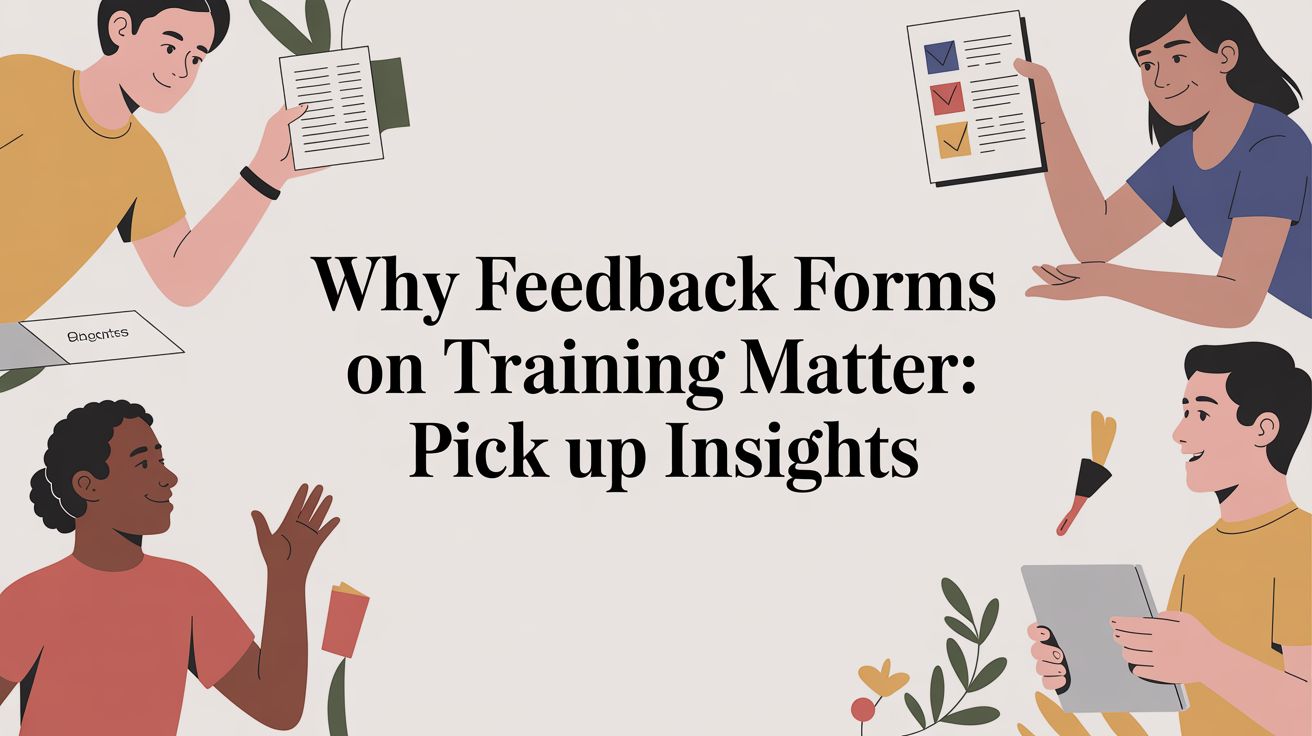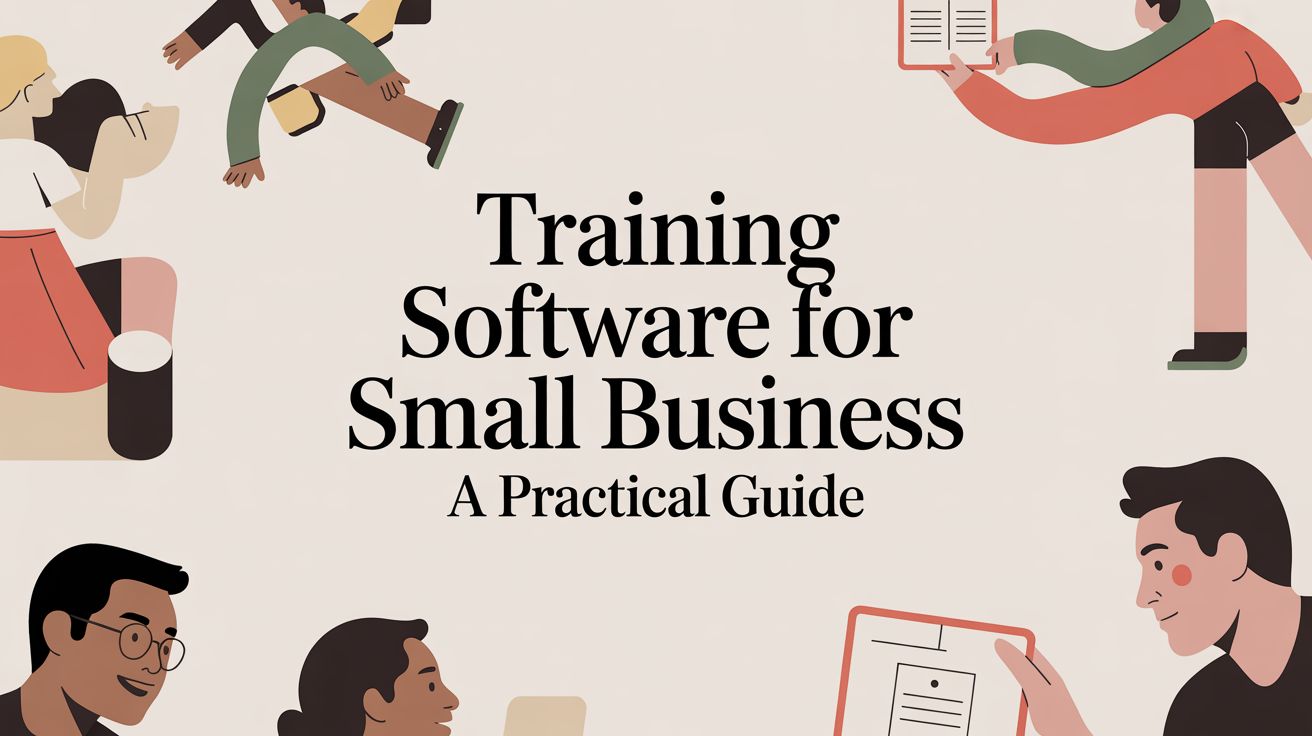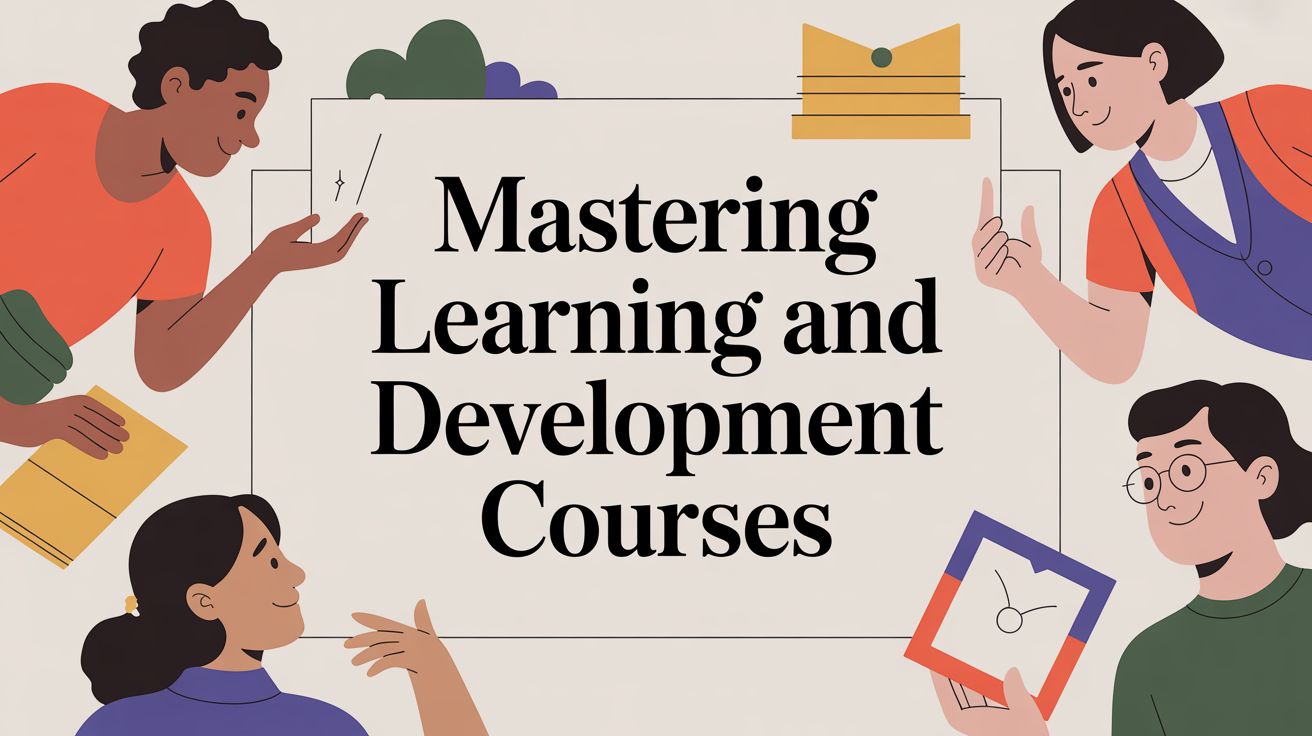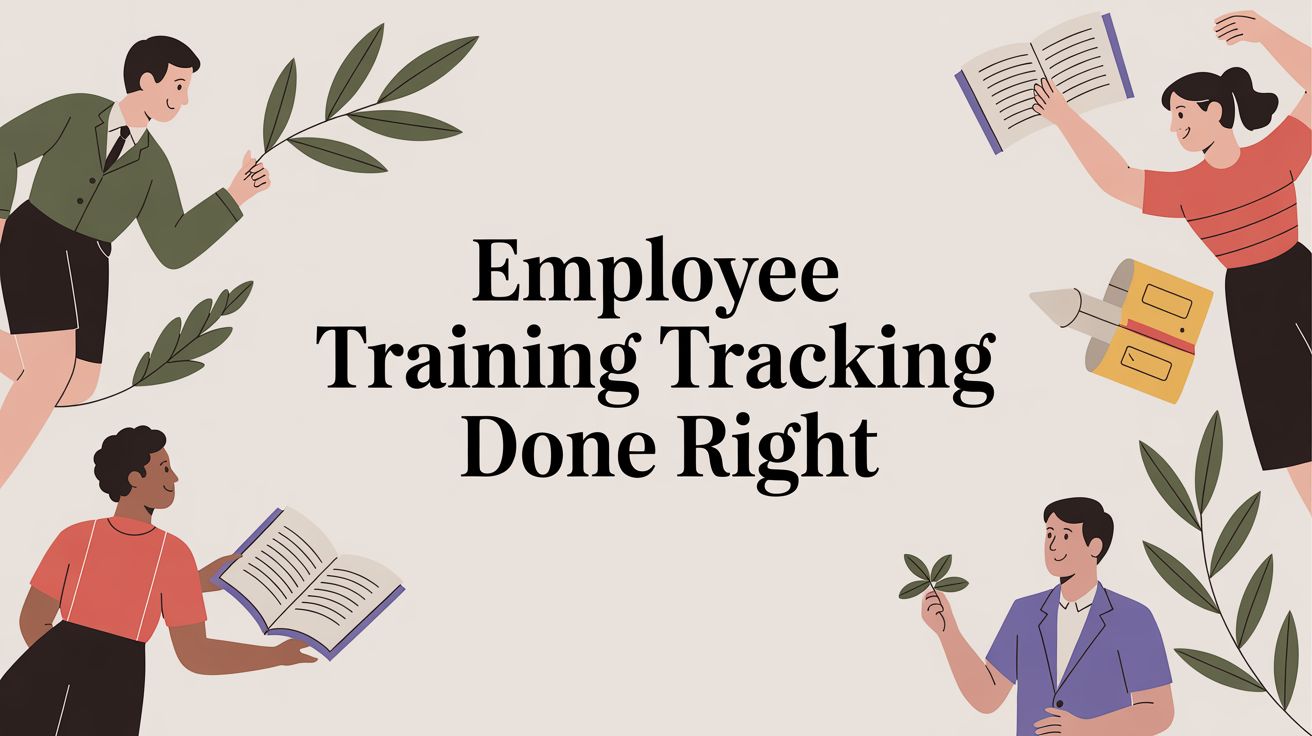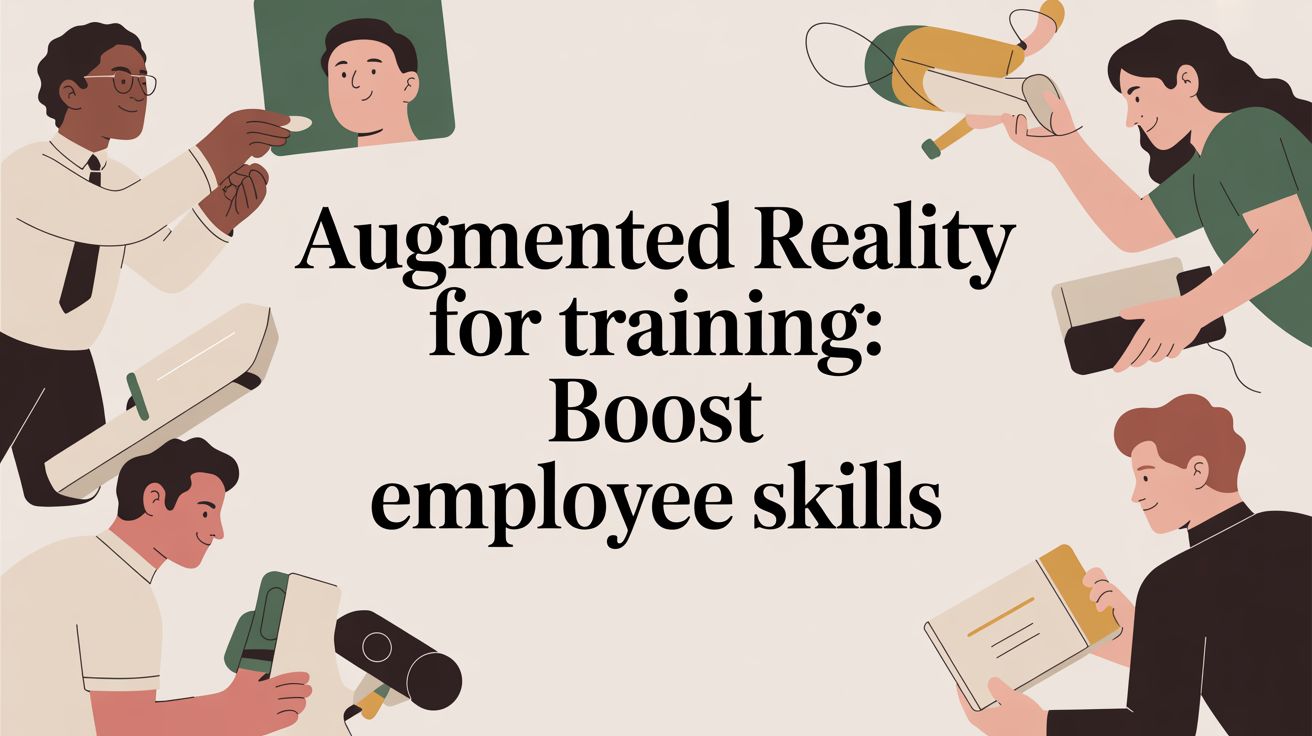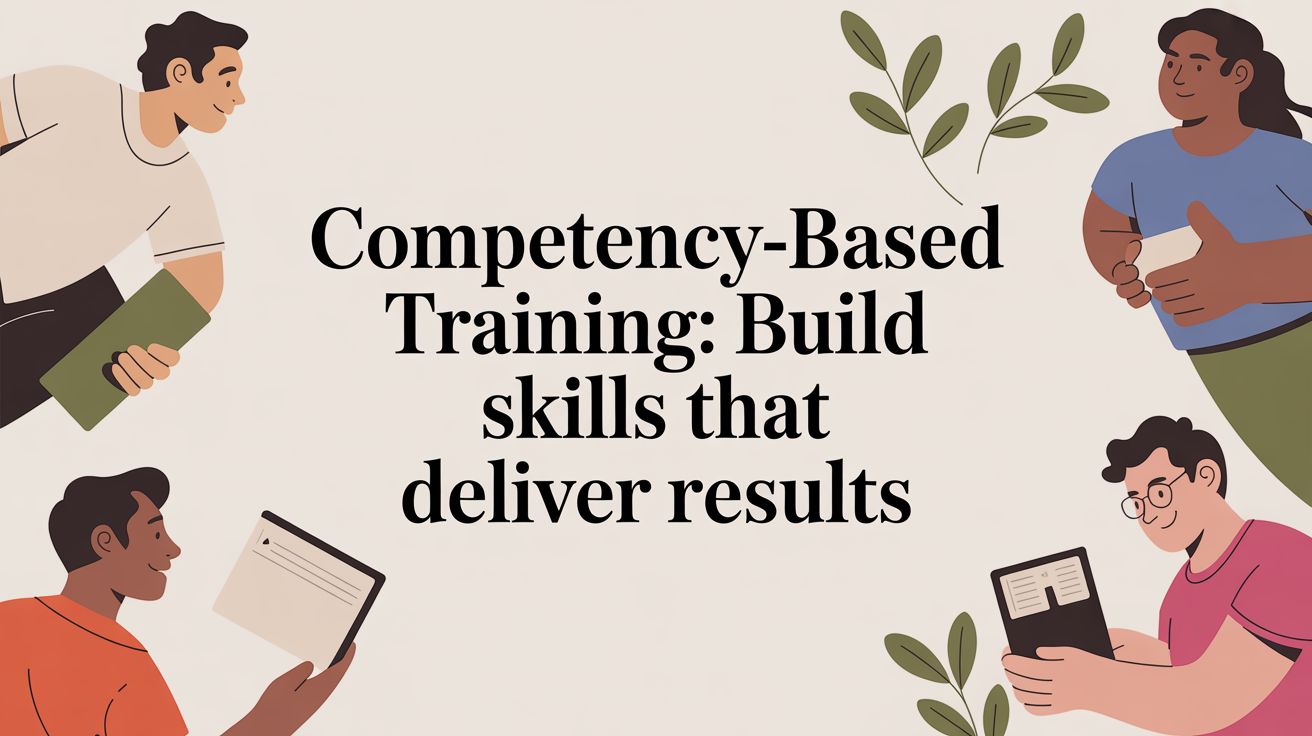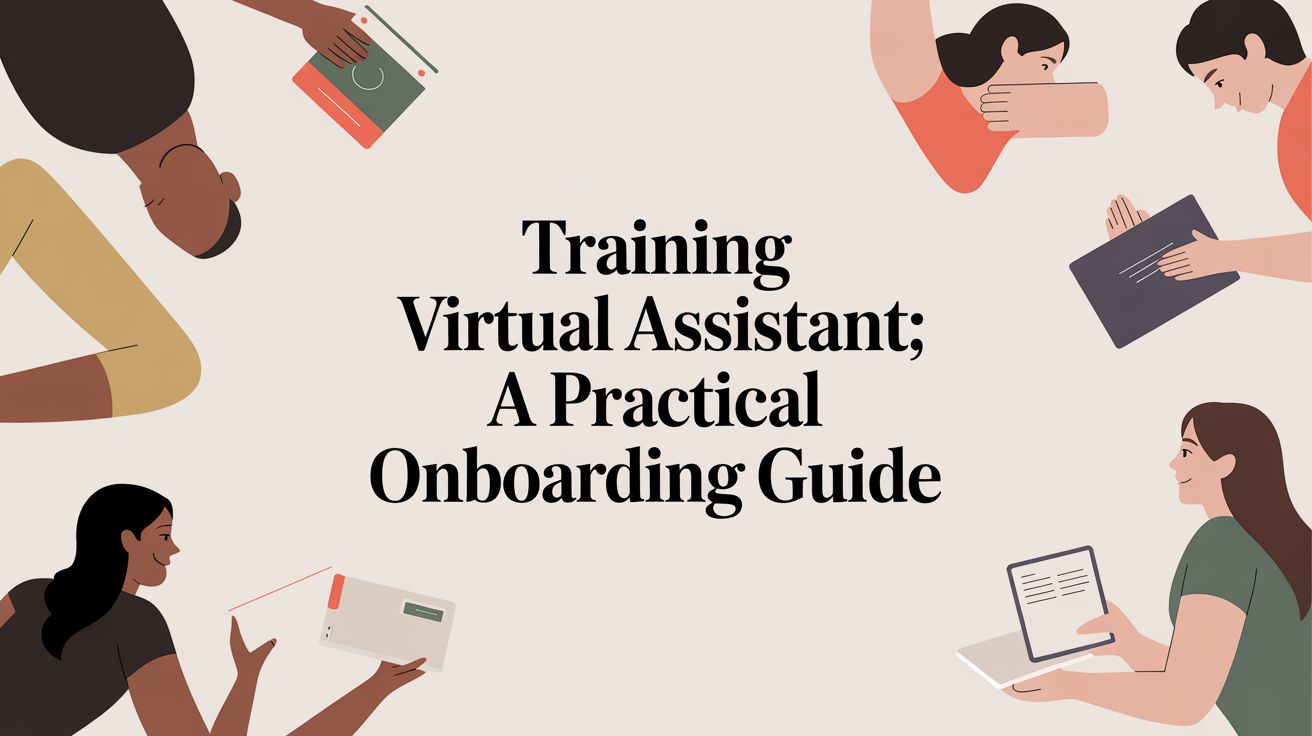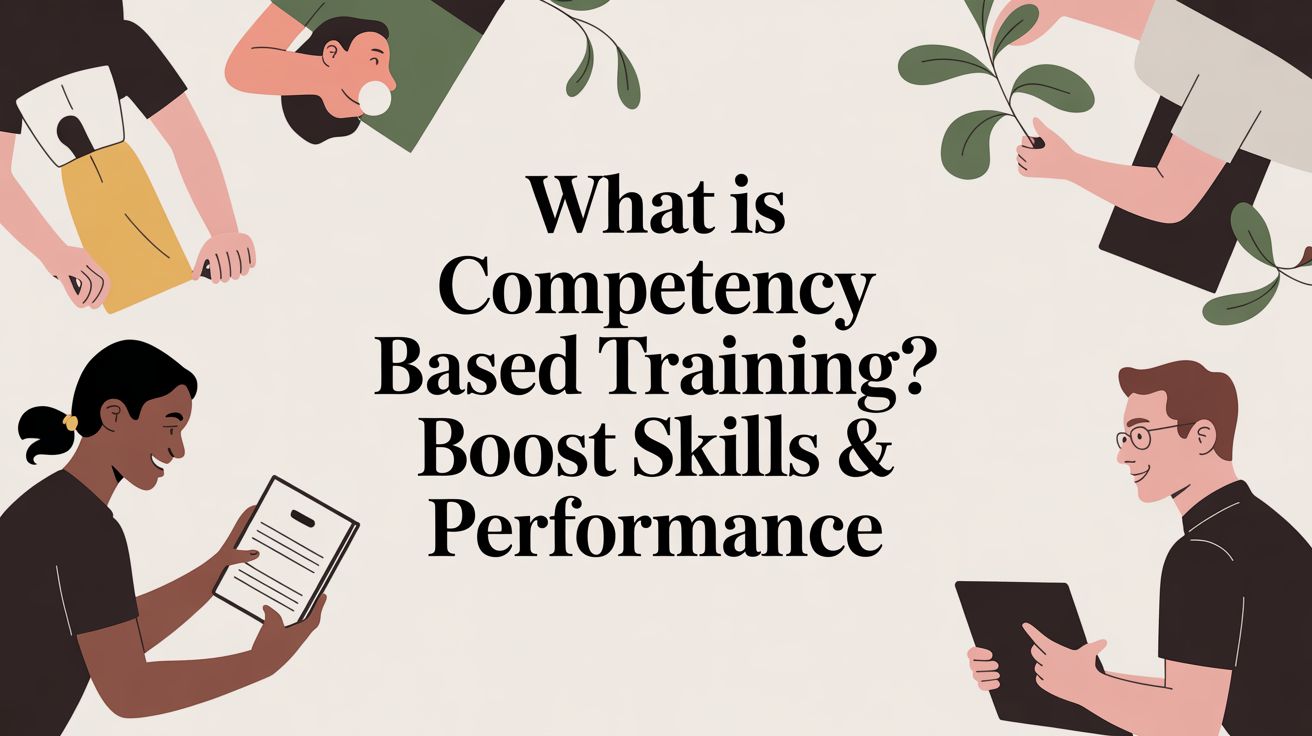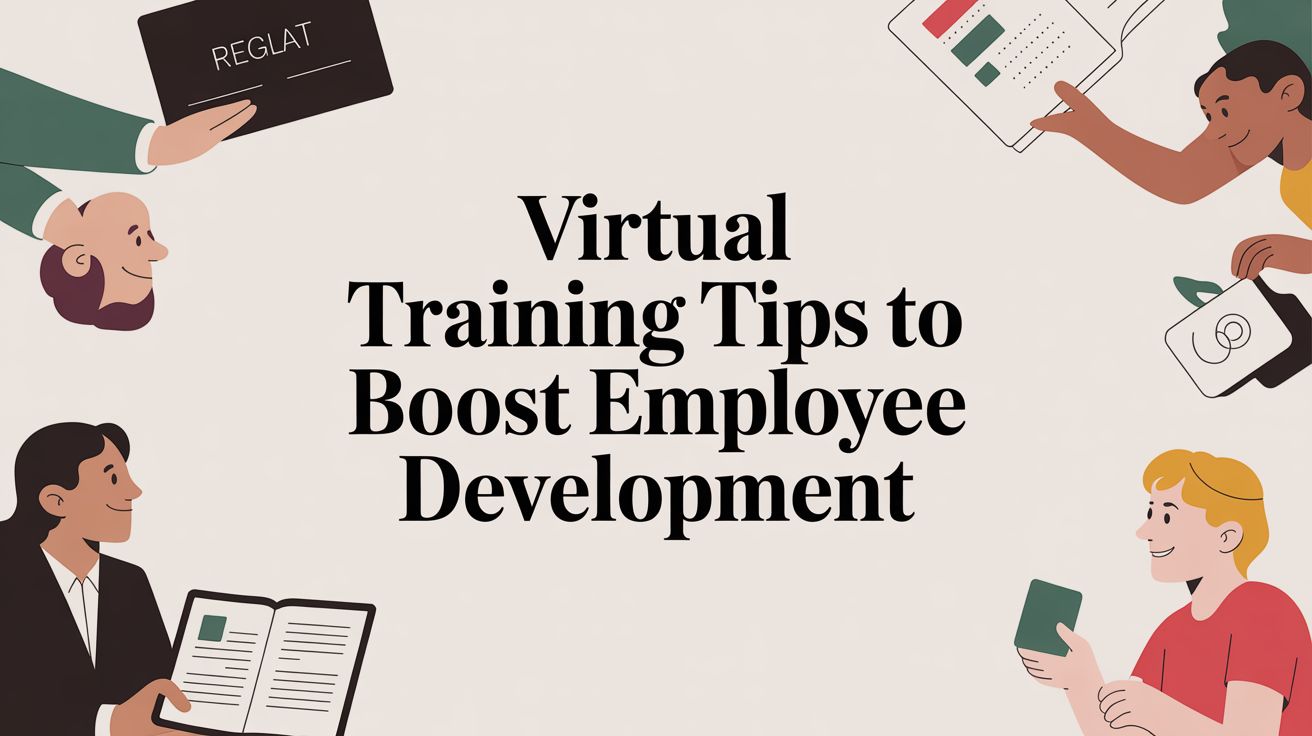8 Effective Training Programme Example Models for 2025
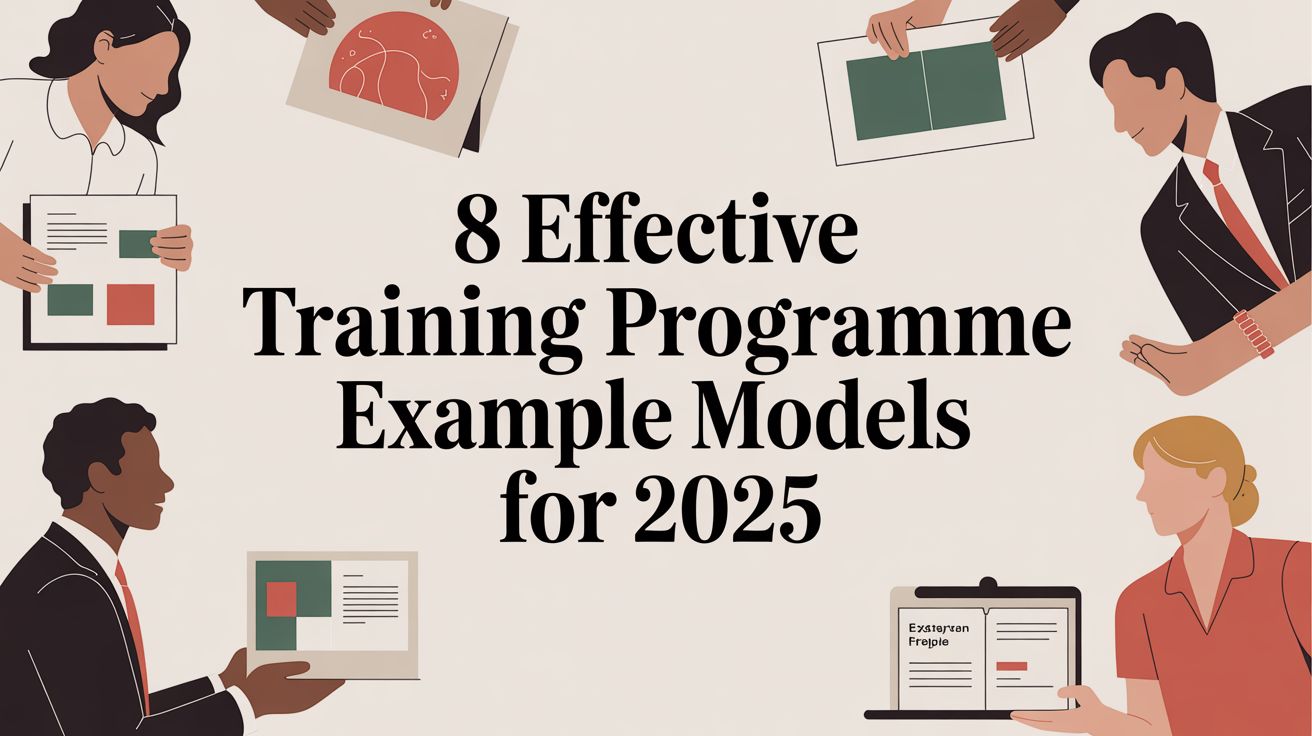
Designing a truly effective training programme can feel like a complex puzzle. While understanding learning theories is essential, the real challenge lies in translating those concepts into a practical structure that delivers measurable results. Generic templates often fall short, failing to address the unique needs of your team and business objectives. That’s why seeing a concrete training programme example in action is so valuable. It moves beyond abstract ideas and provides a tangible blueprint for success.
This article cuts through the noise. We will dissect eight distinct training programme examples, from structured leadership development to dynamic on-the-job coaching. For each one, we won't just describe what it is; we'll break down its core strategy, reveal the specific tactics that make it work, and provide actionable takeaways you can implement immediately.
You’ll learn how to structure different types of training, set clear objectives, and measure impact effectively. Whether you're a training manager refining your current offerings or a business leader building a new initiative, these real-world examples offer the detailed insights needed to create programmes that genuinely enhance skills and drive performance. Let's explore the models that work.
1. Competency-Based Training Programme Example
Competency-based training (CBT) shifts the focus from time spent in a classroom to the mastery of specific, measurable skills. This approach defines what a person needs to be able to do to perform a job successfully and then designs training around those competencies. It's a results-oriented training programme example that values what learners can do over how long they’ve trained.
Unlike traditional models where everyone follows the same path, CBT allows for personalised learning journeys. Employees who already possess certain skills can test out of those modules, while others can spend more time on areas where they need development. This flexibility makes it highly efficient and directly tied to organisational goals.
Strategic Breakdown
The core strategy of CBT is to align training directly with on-the-job performance requirements. By mapping out the specific knowledge, skills, and behaviours (KSBs) needed for key roles, organisations can ensure that every training dollar is spent on developing capabilities that drive business results.
This model is particularly effective for technical roles or positions with clear performance standards, such as software development, nursing, or skilled trades. The training is built backwards from the desired outcome, ensuring relevance and immediate application.
Pro Tip: Begin by conducting a thorough competency mapping exercise for a critical role in your organisation. Interview top performers and their managers to identify the exact skills and behaviours that correlate with success. This map becomes the blueprint for your entire training programme.
Actionable Takeaways & Template
To implement a competency-based training programme, follow these steps:
- Identify Core Competencies: Define the specific skills needed for the target role. For a project manager, this might include risk management, stakeholder communication, and budget oversight.
- Develop Assessment Criteria: Create clear, observable metrics to evaluate mastery for each competency. For example, "Can create a project budget with less than a 5% variance."
- Design Learning Modules: Build training modules around each competency, offering various learning formats like workshops, simulations, or on-the-job coaching.
- Implement & Assess: Learners engage with modules until they can demonstrate mastery through assessments. Progress is based on performance, not time.
- Track & Manage: Use a training management system like Coursebricks to manage scheduling for assessments, instructor-led workshops, and individual coaching sessions, ensuring a smooth logistical process for this personalised approach.
2. Mentoring and Coaching Programme
A mentoring and coaching programme is a personalized, relationship-based approach where experienced professionals guide less experienced employees. This one-on-one model focuses on knowledge transfer, skill development, and long-term career growth, making it an impactful training programme example for nurturing talent.
Unlike formal classroom training, this method thrives on tailored guidance and real-world wisdom. It helps mentees navigate complex workplace dynamics, build confidence, and align their personal ambitions with organisational objectives. This approach is widely used in executive development at companies like Microsoft and GE to cultivate future leaders.
Strategic Breakdown
The core strategy is to accelerate development by leveraging internal expertise. It formalises the natural process of experienced staff guiding newcomers, creating a structured framework for passing down critical institutional knowledge and leadership skills that cannot be taught in a workshop.
This model is exceptionally effective for leadership development, succession planning, and improving employee retention. By investing in personal growth, organisations demonstrate a commitment to their employees' careers, which significantly boosts loyalty and engagement. The focus is on holistic development, covering both hard skills and crucial soft skills like political acumen and strategic thinking.
Pro Tip: Pair mentors and mentees based on both skills gaps and personality compatibility. A strong rapport is the foundation of a successful mentoring relationship. Use initial chemistry meetings to ensure a good fit before formalising the partnership.
Actionable Takeaways & Template
To implement a mentoring and coaching programme, follow these steps:
- Define Programme Goals: Clearly state the objectives. Is it for leadership succession, skill transfer for a specific role, or general career development?
- Establish Roles & Responsibilities: Create clear guidelines for both mentors and mentees. Define expectations for meeting frequency, confidentiality, and goal setting.
- Provide Mentor Training: Equip mentors with the necessary coaching and feedback skills. Offer a short workshop on active listening, goal setting, and constructive communication.
- Facilitate Goal Setting: Mentees, with their mentor's guidance, should set specific, measurable, achievable, relevant, and time-bound (SMART) goals for the programme's duration.
- Schedule & Track: Use a training management system like Coursebricks to schedule initial kick-off meetings, track mentor-mentee pairings, and manage regular check-in sessions to ensure the programme stays on course and delivers measurable results.
3. Blended Learning Programme
A blended learning programme integrates multiple training delivery methods to create a cohesive and flexible learning experience. This powerful training programme example combines the strengths of face-to-face instruction with the convenience of online digital media. It’s not just about mixing methods; it’s about strategically choosing the right format for each learning objective to boost engagement and retention.
This hybrid model can include in-person workshops, live virtual classrooms, self-paced e-learning modules, and hands-on practical exercises. For instance, a new corporate onboarding program might use online videos for initial policy overviews, followed by an in-person workshop for team-building activities, creating a dynamic and efficient training journey.
Strategic Breakdown
The core strategy behind blended learning is to optimise the training process by matching the content to the most effective delivery format. Foundational knowledge can be delivered efficiently through self-paced online modules, freeing up valuable instructor-led time for higher-impact activities like collaborative problem-solving, role-playing, and direct mentorship.
This approach acknowledges that learners have different preferences and schedules, offering them greater control and autonomy over their development. By integrating various training delivery methods, organisations can create a richer, more impactful learning ecosystem that caters to diverse needs and improves knowledge application.
Pro Tip: Start by mapping your learning objectives to specific delivery methods. Use online modules for "what" and "why" (knowledge transfer) and reserve in-person or live sessions for "how" (skill practice and application).
Actionable Takeaways & Template
To implement a successful blended learning programme, follow these steps:
- Define Learning Objectives: Clearly state what learners should be able to do after the training. For a sales team, this could be "Demonstrate the new CRM software's lead-tracking feature."
- Select a Mix of Modalities: Choose the best formats for each objective. Use e-learning for software tutorials, a virtual classroom for Q&A, and in-person sessions for role-playing sales calls.
- Integrate Components Seamlessly: Ensure a smooth transition between online and offline elements. The online module should directly prepare learners for the in-person workshop.
- Implement and Monitor: Roll out the programme and track learner progress and engagement across all components.
- Track & Manage: Use a training management system like Coursebricks to schedule and coordinate all the instructor-led components, such as booking trainers for virtual sessions, managing classroom availability, and tracking attendance for both live online and in-person events.
4. On-the-Job Training (OJT) Programme Example
On-the-Job Training (OJT) is a practical, hands-on method where employees learn new skills directly in their work environment. This experiential approach immerses learners in the actual tasks they will be performing, facilitating a seamless transition from learning to application. It stands as a foundational training programme example focused on learning by doing.
Unlike theoretical classroom sessions, OJT provides immediate context and relevance. Trainees work alongside experienced colleagues or mentors, gaining real-time feedback and mastering processes as they contribute to actual work outputs. This model is highly effective for roles where practical skills are paramount, such as in retail, manufacturing, and skilled trades.
Strategic Breakdown
The core strategy of OJT is to accelerate proficiency and integration by embedding training directly into the workflow. This method minimizes the gap between learning and performing, which can significantly reduce ramp-up time for new hires. It ensures that employees learn the specific procedures, tools, and cultural norms of their actual workplace.
This approach is particularly valuable for building practical skills that are difficult to simulate in a classroom. For example, a new barista learns to operate an espresso machine and interact with customers far more effectively by doing it on the café floor than by reading a manual. The training is directly tied to productivity.
Pro Tip: Create a structured OJT plan with a clear checklist of tasks and skills to be mastered. Pair trainees with experienced employees who have been trained as mentors, ensuring they can teach effectively and provide constructive, supportive feedback.
Actionable Takeaways & Template
To implement a successful on-the-job training programme, follow these steps:
- Define Learning Objectives: Clearly outline what the employee should be able to do independently by the end of the training period. For a retail associate, this could include operating the POS system and handling customer returns.
- Prepare the Trainer: Select experienced employees to act as trainers and provide them with guidance on coaching, feedback, and adult learning principles.
- Structure the Training: Develop a checklist or schedule that introduces tasks in a logical sequence, moving from simple to more complex responsibilities.
- Implement & Supervise: The trainee performs job tasks under supervision. The trainer provides demonstrations, offers guidance, and gives immediate feedback.
- Evaluate & Refine: Regularly check the trainee's progress against the objectives. Use a training management system like Coursebricks to schedule check-ins, track completion of checklist items, and manage mentor assignments, keeping the process organized and accountable.
5. Leadership Development Programme
A Leadership Development Programme is a structured initiative designed to cultivate the skills and capabilities of current and future leaders within an organisation. This strategic training programme example moves beyond basic management training, focusing on complex competencies such as strategic thinking, emotional intelligence, and influential communication. The goal is to build a robust leadership pipeline to ensure long-term organisational success and adaptability.
These programmes are often cohort-based, bringing together a select group of high-potential employees to learn and grow together over an extended period. By blending formal instruction with real-world application, such as at GE's renowned Crotonville Leadership Institute, they create immersive experiences that shape effective and visionary leaders.
Strategic Breakdown
The core strategy is to align leadership capabilities directly with the organisation's long-term vision and strategic goals. Instead of teaching generic leadership theories, these programmes contextualise learning within the company's specific challenges and market position. This ensures that emerging leaders are not just skilled managers but also strategic thinkers who can drive the business forward.
This model is critical for organisations focused on succession planning, innovation, and navigating complex market changes. It builds a consistent leadership culture and language across the enterprise, which enhances collaboration and alignment among different departments and business units.
Pro Tip: Involve senior executives as mentors or sponsors in the programme. Their direct involvement provides invaluable insight, demonstrates organisational commitment, and helps participants build critical relationships with key stakeholders.
Actionable Takeaways & Template
To implement a leadership development programme, follow these steps:
- Define Leadership Competencies: Identify the key behaviours and skills that define successful leadership at your organisation. This might include strategic agility, talent development, and decision-making.
- Select High-Potential Candidates: Use a fair and transparent process to identify employees with the potential and desire to grow into leadership roles.
- Design a Blended Learning Journey: Create a curriculum that mixes workshops, experiential learning projects, 360-degree feedback, and peer coaching.
- Implement & Measure: Roll out the programme, focusing on applying lessons to real business challenges. Track behavioural changes and their impact on team and business performance.
- Schedule & Coordinate: Use a training management system like Coursebricks to manage the complex logistics of the programme, including scheduling cohort sessions, coordinating executive mentorship meetings, and tracking participation across different instructor-led modules.
6. Online Learning and E-Learning Programme
Online learning and e-learning programmes deliver educational content through digital platforms, offering unparalleled flexibility and scalability. Learners can access modules, interactive courses, and virtual training sessions from anywhere with an internet connection, often at their own pace. This approach has become a cornerstone training programme example for global organisations seeking to provide consistent, accessible education to a dispersed workforce.
Unlike strictly scheduled in-person training, e-learning allows employees to integrate professional development into their workflow. From mandatory compliance modules to in-depth skill development courses on platforms like Coursera or a company's internal Learning Management System (LMS), this model supports a wide range of learning needs efficiently.
Strategic Breakdown
The core strategy of an online learning programme is to centralise training resources and democratise access to knowledge. By digitising content, organisations can ensure every employee receives the same high-quality information, track completion rates accurately, and update materials instantly across the entire company.
This model is ideal for delivering foundational knowledge, compliance training, and technical skills that don't require hands-on, in-person practice. It is also highly effective for pre-work before a live session or as a follow-up resource. Deciding whether to use live video or pre-recorded content is a key strategic choice, as each format serves different learning objectives and engagement levels.
Pro Tip: Blend self-paced e-learning with live virtual sessions to create a hybrid model. Use self-paced modules for foundational concepts and reserve live, instructor-led time for interactive discussions, Q&A, and complex problem-solving. You can learn more about effective virtual training strategies.
Actionable Takeaways & Template
To implement a successful online learning and e-learning programme, follow these steps:
- Define Learning Objectives: Clearly state what learners should know or be able to do after completing the programme. For a cybersecurity module, an objective could be: "Identify and report a phishing attempt."
- Select Content & Format: Choose the right format for your content, such as short video tutorials, interactive quizzes, or detailed reading materials. Keep modules focused and brief (5-15 minutes) to maintain engagement.
- Choose a Delivery Platform: Deploy your content through a Learning Management System (LMS) or an external provider like Udemy for Business. Ensure the platform is user-friendly and mobile-accessible.
- Promote & Launch: Communicate the value of the training to employees and provide clear instructions on how to access it. Create a launch plan to build momentum.
- Gather Feedback & Iterate: Use platform analytics and learner surveys to track progress and gather feedback. Continuously update and improve your content based on this data.
7. Cross-Functional Training Programme
A cross-functional training programme is a strategic initiative designed to expose employees to different departments and roles outside of their primary function. This rotational approach breaks down organisational silos and builds a more agile, versatile workforce. It's a powerful training programme example for developing leaders and fostering a holistic understanding of the business.
Instead of keeping employees specialised in one area, this model encourages them to gain a broader perspective and acquire a diverse skill set. This enhances collaboration, as employees who have walked in their colleagues' shoes are better equipped to understand different departmental challenges and priorities. It's particularly common in management consulting, banking, and large tech companies.
Strategic Breakdown
The core strategy here is to cultivate T-shaped employees: professionals with deep expertise in their core area (the vertical bar of the T) and a broad understanding of how other business functions operate (the horizontal bar). This approach directly combats the tunnel vision that can emerge in highly specialised organisations.
By rotating employees through key departments like marketing, finance, and operations, the company builds a pipeline of future leaders who can make informed, strategic decisions. This broader context helps employees connect their daily work to the company's overarching goals, increasing engagement and innovation.
Pro Tip: Start a pilot programme with a small group of high-potential employees. Define clear rotation objectives, durations, and learning outcomes for each department they visit to ensure the experience is structured and valuable, not just a casual tour.
Actionable Takeaways & Template
To implement a cross-functional training programme, follow these steps:
- Identify Key Rotations: Select departments that are critical to the business process and offer significant learning opportunities. For a manufacturing company, this might include supply chain, quality assurance, and sales.
- Create Structured Learning Plans: For each rotation, outline the specific skills and knowledge the employee should gain. Assign a mentor or sponsor in the host department to guide them.
- Balance Core Responsibilities: Develop a clear plan for how the employee's primary duties will be managed during their rotation to avoid burnout and ensure business continuity.
- Debrief & Document: After each rotation, conduct a debriefing session to discuss key learnings and how they can be applied. Document these insights for future participants.
- Schedule & Coordinate: Use a training management system like Coursebricks to manage the complex logistics of scheduling rotations, mentor check-ins, and debriefing sessions across multiple departments, ensuring a smooth and organised experience for everyone involved.
8. Microlearning Programme
A microlearning programme breaks down complex topics into small, highly focused, bite-sized learning nuggets. This approach delivers content in short bursts, typically lasting two to five minutes, making it ideal for the modern learner's short attention span and on-the-go schedule. This training programme example leverages mobile devices to make learning accessible anytime, anywhere.
Unlike lengthy, traditional modules, microlearning focuses on one specific learning objective per session. This ensures that employees can quickly absorb information, apply it immediately, and retain it more effectively. Platforms like Axonify and Duolingo have popularised this method by using it for everything from language learning to critical compliance training in the banking industry.
Strategic Breakdown
The core strategy of microlearning is to embed learning into the daily workflow with minimal disruption. By delivering just-in-time knowledge, it helps employees solve immediate problems and reinforce skills over time through spaced repetition. This method is incredibly effective for continuous development, product knowledge updates, and safety procedure reminders.
This model moves away from event-based training towards a continuous learning culture. It supports performance by providing answers exactly when needed, which enhances both knowledge retention and employee confidence. You can learn more about microlearning as a delivery technique on coursebricks.io to explore its strategic fit.
Pro Tip: Use a blended approach. While microlearning is excellent for reinforcement and quick updates, it can be paired with instructor-led sessions for more complex topics. Use micro-videos or quizzes to prepare learners before a workshop or to follow up afterward.
Actionable Takeaways & Template
To implement a microlearning programme, follow these steps:
- Isolate a Single Objective: Identify a specific, singular piece of knowledge or skill to teach. For example, "How to process a customer refund" instead of "Full guide to customer service."
- Choose the Right Format: Select a format that fits the objective, such as a short video, an infographic, a quick quiz, or an interactive simulation.
- Design for Mobile-First: Ensure all content is easily viewable and interactive on a smartphone. Use large fonts, clear visuals, and simple navigation.
- Incorporate Engagement: Add gamification elements like points, badges, or leaderboards to motivate learners and encourage consistent participation.
- Schedule & Reinforce: While microlearning is often self-paced, a training management system like Coursebricks can be used to send out notifications for new content and schedule optional live Q&A sessions to reinforce the material.
8-Point Training Programme Comparison
| Program | Implementation complexity | Resource requirements | Expected outcomes | Ideal use cases | Key advantages |
|---|---|---|---|---|---|
| Competency-Based Training Programme | High — requires framework and assessment design | Moderate–High — skilled assessors, assessment tools, design time | Measurable, job-aligned competencies; clear ROI | Regulated fields, technical roles, apprenticeships | Direct job alignment, measurable progression, flexible pacing |
| Mentoring and Coaching Programme | Medium — coordinate relationships and goals | High — experienced mentors, significant time investment | Personalized development, knowledge transfer, higher engagement | Leadership grooming, tacit-knowledge roles, career growth | One-on-one guidance, accelerated development, strong relationships |
| Blended Learning Programme | High — complex sequencing and integration | High — LMS/tech, instructors, instructional design | Improved retention and flexibility; cost savings vs all in-person | Onboarding, certifications, large distributed cohorts | Mix of modalities, accommodates learning styles, balanced engagement |
| On-the-Job Training (OJT) Programme | Low–Medium — needs structured checklists and supervision | Low — supervisors, workplace time; minimal formal resources | Rapid productivity, practical skill acquisition, high retention | Retail, manufacturing, service roles, apprenticeships | Immediate application, low cost, quick time-to-productivity |
| Leadership Development Programme | Very high — multi-level, long-term program design | Very high — executive time, coaches, simulations, cohort support | Strong leadership pipeline, strategic capability, retention | Succession planning, high-potential and executive development | Builds internal leaders, improves organizational performance |
| Online Learning and E-Learning Programme | Medium — content creation and platform setup | Medium — LMS/platform, content designers, hosting | Scalable, consistent delivery with analytics and tracking | Compliance, global workforce training, scalable upskilling | Highly scalable, flexible scheduling, easy updates |
| Cross-Functional Training Programme | Medium–High — requires inter-department coordination | Medium — rotation planning, sponsors, time away from core work | Broader organizational perspective, collaboration, talent identification | Rotational programs, leadership prep, silo reduction | Versatility, improved collaboration, talent mobility |
| Microlearning Programme | Low–Medium — modular instructional design required | Low–Medium — short content production, mobile optimization | High engagement, quick retention for focused objectives | Just-in-time training, refreshers, busy or mobile learners | Bite-sized, mobile-first, high completion and easy updates |
Choosing and Implementing the Right Training Programme
The journey through various training programme examples, from structured competency-based models to agile microlearning initiatives, reveals a fundamental truth: there is no one-size-fits-all solution. The most effective training is not about adopting the trendiest format but about creating a strategic, purpose-built experience that aligns directly with your organization's unique goals, culture, and employee needs. Each model we've explored, whether it's the hands-on approach of On-the-Job Training or the long-term vision of a Leadership Development Programme, offers a distinct set of tools to solve specific business challenges.
Your role as a training professional is to be an architect, not just a manager. You are designing learning ecosystems that empower employees, drive performance, and build a more resilient, skilled workforce. The key is to move beyond simply implementing a programme and start strategically selecting and combining elements from different models to create a hybrid approach that truly works for your context.
Key Takeaways and Strategic Next Steps
To translate these examples into action, focus on these core principles:
-
Start with the "Why": Before you choose a format, deeply understand the business problem you need to solve. Is it a skills gap? Low employee engagement? A need for stronger leadership? The purpose will dictate the programme. A competency-based framework is ideal for closing specific skill gaps, while a mentoring programme excels at fostering cultural knowledge and leadership potential.
-
Audit Your Resources and Constraints: Be realistic about what you can achieve. Consider your budget, available technology, subject matter experts' time, and your team's capacity. A complex blended learning programme may be powerful, but a well-executed microlearning or OJT initiative could deliver a greater ROI if resources are limited.
-
Design for the Learner: The modern learner expects flexibility, relevance, and engagement. When designing any curriculum, especially for new hires, incorporating effective onboarding best practices can dramatically improve knowledge retention and initial engagement. Think about how your employees best absorb information and build your programme around their habits and preferences.
-
Integrate and Automate: Managing the logistics of instructor-led, hybrid, and face-to-face training can be complex. Utilizing a dedicated training management system like Coursebricks can automate scheduling, registration, communication, and feedback collection for these live events. This frees up your team to focus on high-impact activities like content quality and instructional design rather than getting lost in administrative tasks.
Pro Tip: Don't be afraid to pilot a small-scale version of a new training programme example with a select group. This allows you to gather feedback, identify potential issues, and refine the model before a full-scale rollout, saving time and resources while ensuring greater success.
Ultimately, the power of a well-chosen training programme lies in its ability to be a catalyst for growth. By thoughtfully analyzing these diverse examples and applying their core strategies, you can build initiatives that not only educate but also inspire and empower your employees. The right training doesn't just fill a gap; it builds a bridge to future success for both the individual and the organization.
Ready to explore Coursebricks?
Manage training programs, automate emails, and generate detailed reports — all in one place.




